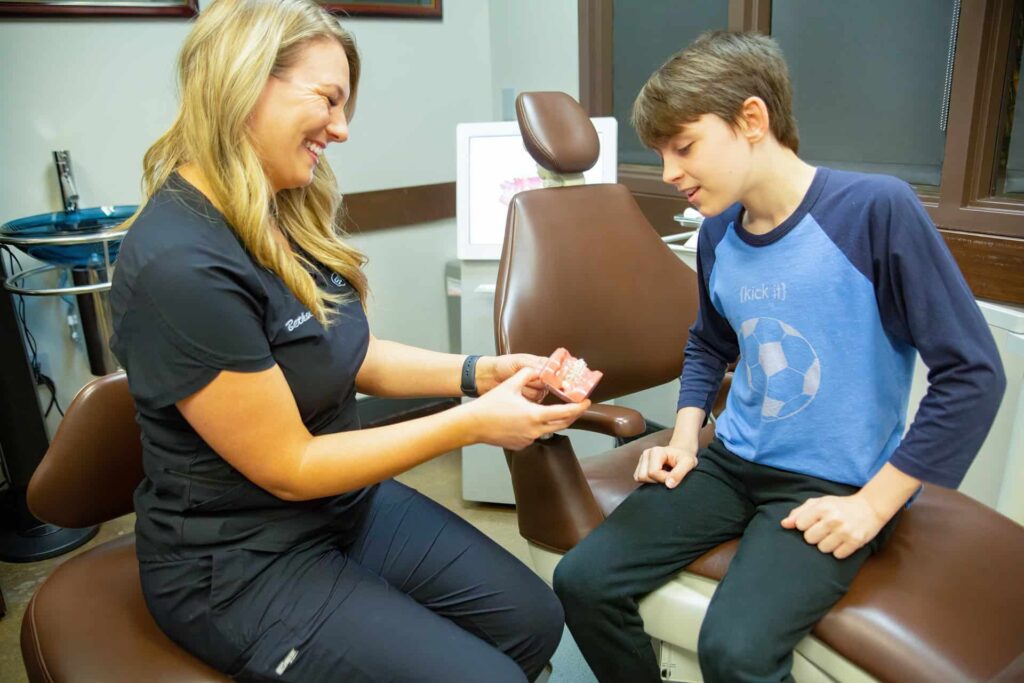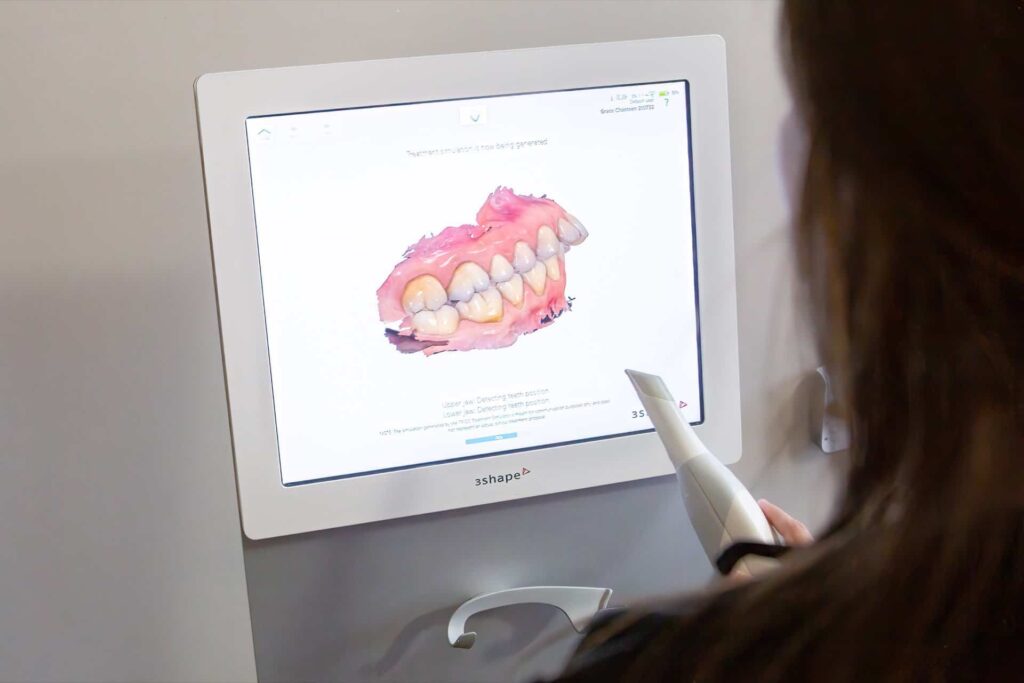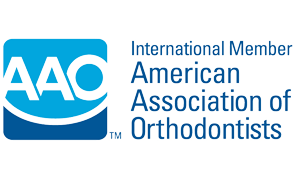Your first visit to a new dentist or orthodontist usually includes a full examination, including dental X-rays. Most people who hear “X-rays” think of getting scans in an emergency room. How do dental X-rays help your smile? Are dental X-rays safe?
Today’s dental X-rays are safe and use less radiation than machines of the past. At Smith and Davis Orthodontics, we use dental X-rays to check your teeth and jawbones to ensure they’re all healthy. Do you have tooth decay or cavities? An X-ray can help us find out.
Let’s explore the kinds of dental X-rays, how often you should get a dental X-ray, and why you shouldn’t worry about dental X-ray radiation.

What Is a Dental X-Ray Machine?
When you hear “X-ray machine,” you probably think of those massive machines you see in a hospital or clinic. Dental X-ray machines are very different.
Today’s dentist X-ray machines are more compact and open. Their smaller size allows us to move them to the exact location we need to examine and image as small an area as possible.
Some of the most popular questions are about radiation exposure in dental X-rays. The truth is that dental X-rays’ radiation exposure is far less than what you would get from a chest X-ray. Let’s get into a bit of technical talk.
On average, dental X-ray machines use about 1-3 mrems (millirems) to take an image of your jaws and teeth. By contrast, a chest X-ray uses about 10 millirems.
Does that seem like a lot of dental X-ray radiation? If so, consider this: A person is exposed to about 300 mrems of background radiation from natural sources annually and about 320 mrems from manmade sources, including X-rays, televisions, and smartwatches. In fact, 620 mrems a year is considered a safe level.
As you can see, a dental X-ray is at a safe level for humans.
Types of Dental X-rays
There are two main types of dental X-rays. Bitewing X-rays show the crown of the tooth from the tip to the bone. This X-ray is good for spotting cavities, infections, weakened enamel, and other issues with the tooth.
Periapical X-rays show the entire tooth from root to tip and all the teeth in one portion of the upper or lower jaw. This shows us if there are any problems with the root structure or bone surrounding the roots.
Can You Get Dental X-Rays While Pregnant?
Should you be concerned about getting dental X-rays while pregnant? The X-ray machines today concentrate the rays to your jaw, which avoids exposing other parts of your body, including the abdomen. In addition, the amount of radiation is so low, it’s doubtful it could harm a fetus.
It’s OK if you don’t just want to take our word for it. The FDA, the American College of Obstetricians and Gynecologists (ACOG), and the American College of Radiology (ACR) all agree that the importance of getting dental X-rays outweighs the slim risk.

Why Do I Need Dental X-Rays?
Our patients get 3D dental scans in addition to dental X-rays. Why do you need both, and how often do you need dental X-rays?
We use 3D scans to get a detailed image of your tooth’s surface and the structure of your mouth. The X-rays see below the surface to detect problems in the bones or roots of your teeth.
Our X-rays help us find abnormalities you may not be able to see, such as an abscessed tooth root, an infection, bone deterioration, and even bone or oral cancer. Dental X-rays help us ensure your mouth is healthy so we can keep it healthy.
You will need 3D scans and dental X-rays for your orthodontic treatment. We cannot begin treatment if there are problems or weaknesses in your teeth roots or jawbones. With children, we also need to ensure the teeth that haven’t erupted are there and look to be erupting properly.
How often should you get dental X-rays? The general recommendation from the American Dental Association is once every 12-18 months. However, you could get scans every six months or less if you have gum disease. This is to ensure you don’t develop infections or abscesses that could cause tooth loss and be dangerous to your overall health.
How Do Dental X-Rays Work?
Dental X-rays are a simple, in-office process. We have you stand against the X-ray machine and bite down on a mouthpiece to hold your mouth still. We then place a small machine next to your cheek which takes the X-ray.
The X-ray itself only takes a few seconds to capture. Within a few minutes, we have images we can show you so you can see for yourself the state of your teeth and jaws and how healthy they are.

Can You Use Other X-Rays?
Are you new to the area and looking to Smith and Davis Orthodontist to continue your orthodontic treatment? Have you used the same dentist for years and want to use your records with your treatment?
We encourage new patients to bring in their old X-rays. Your past dental records give us a history of your oral health, which makes it easier to treat you. We know what to look for by having your dental history records.
Past X-rays won’t show current issues, which is why we need our own dental X-rays and 3D scans. They will show any new developments, and we can concentrate on areas that might need specific types of treatment, such as a palate expander.
So bring your old records, or let us get them from your previous dentist, but expect a full examination when you first visit us. We want to give you the best, most thorough treatment possible, and we can do that by seeing all parts of your mouth through 3D digital scanning and dental X-rays.
Dental X-Rays in Rogers, AR
Smith and Davis Orthodontics uses state-of-the-art technology to provide the best images possible of your mouth and jaws before treatment begins. These images allow us to create a treatment plan that will be best for you. If you are in the Rogers, AR, and Bentonville, AR, areas, the first step is to schedule a free consultation with us.
Your oral health is vital to your overall health, and treatment with braces or clear aligners can improve your oral health while boosting your self-esteem. Visit Smith and Davis Orthodontics and see the difference exceptional orthodontic treatment can make to your health!





